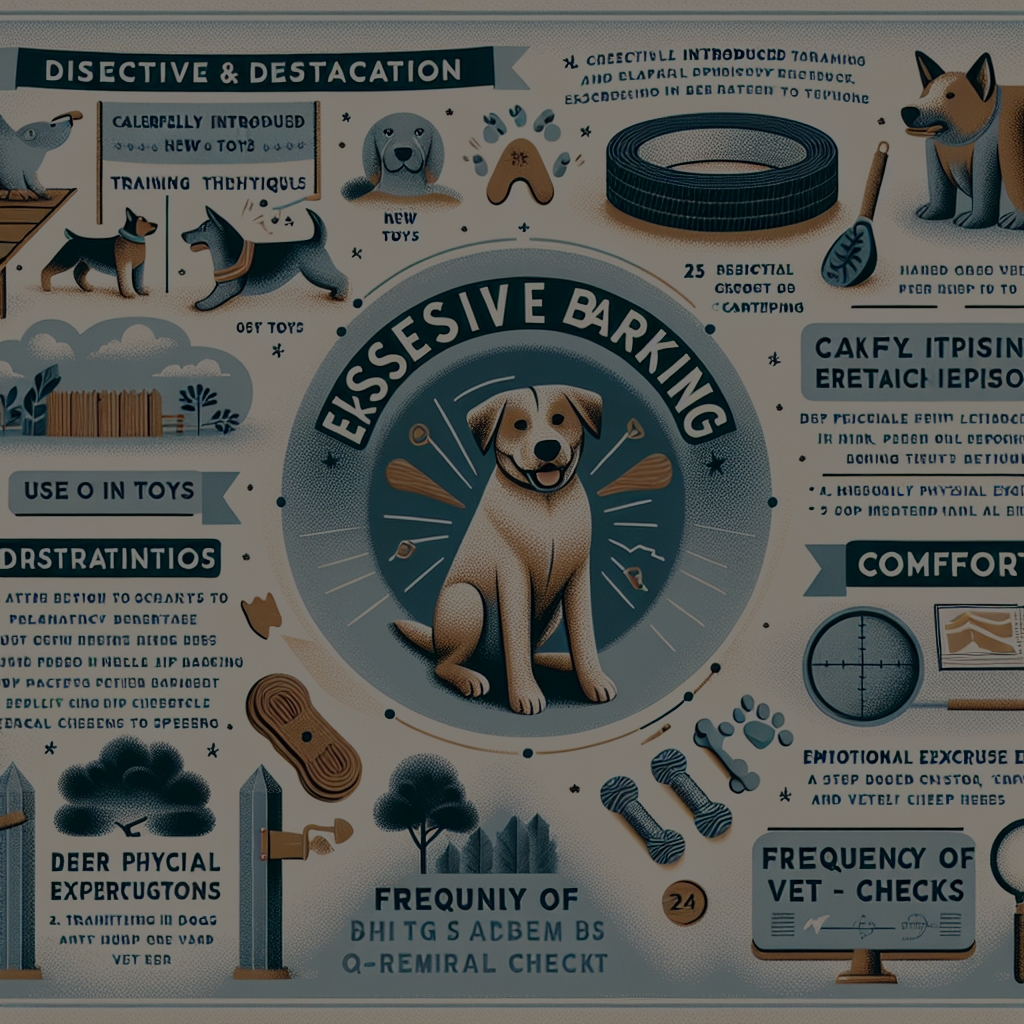
Excessive barking in dogs can be a significant challenge for pet owners, leading to strained relationships with neighbors and increased stress levels within the household. Understanding the reasons behind your dog’s relentless vocalizations is the first step towards addressing the issue. By employing effective training techniques, utilizing available tools and technology, and maintaining consistency and patience, you can successfully curb your dog’s excessive barking and foster a more harmonious living environment.
Understanding the Causes of Excessive Barking
Excessive barking can stem from a variety of causes, making it essential to identify the root of the problem before implementing solutions. Dogs may bark excessively due to boredom or lack of physical and mental stimulation. In such cases, providing more engaging activities and exercise can significantly reduce their vocalizations.
Another common cause of excessive barking is anxiety or fear. Dogs might bark when they feel threatened, either by strangers, other animals, or unfamiliar situations. Identifying triggers and working to desensitize your dog can help them feel more at ease and reduce their need to bark. Additionally, some dogs may bark to seek attention, whether it be from their owners or other pets in the household. Ensuring they receive appropriate attention and reinforcement for calm behavior can address this cause.
Lastly, certain breeds are predisposed to barking more than others due to their genetic background and natural instincts. Understanding your dog’s breed and its characteristics can provide valuable insights into their behavior and help you tailor your approach to managing their barking more effectively.
Training Techniques to Reduce Barking
One effective method to curb excessive barking is through positive reinforcement training. Rewarding your dog for quiet behavior with treats, praise, or playtime can encourage them to remain calm. It’s important to consistently reward the desired behavior immediately after it occurs to reinforce the connection between being quiet and receiving a reward.
Another useful technique is the "speak" and "quiet" command training. Teach your dog to bark on command by saying "speak" and rewarding them when they do. Once they understand this, introduce the "quiet" command by allowing them to bark, then saying "quiet" and rewarding them when they stop barking. Over time, your dog will learn to associate the "quiet" command with stopping their vocalization.
Desensitization is also a vital training method, particularly for dogs that bark due to fear or anxiety. Gradually exposing your dog to their triggers in a controlled and positive manner can help them become more comfortable and less reactive. For example, if your dog barks at strangers, start by having a friend stand at a distance where your dog remains calm, then slowly decrease the distance over time while rewarding your dog for staying quiet.
Utilizing Tools and Technology
Modern technology offers various tools that can assist in managing excessive barking. Anti-bark collars, for instance, can be an effective solution when used correctly. These collars often emit a harmless spray, sound, or vibration when your dog barks, discouraging the behavior over time. However, it’s crucial to choose a collar that suits your dog’s temperament and to use it as part of a broader training strategy rather than relying solely on it.
Additionally, interactive toys and puzzle feeders can provide mental stimulation and keep your dog occupied, reducing boredom-induced barking. These tools engage your dog’s mind and can be especially useful when you’re not able to provide direct attention. Ensuring your dog has access to these stimulating activities can curb their need to bark out of frustration or boredom.
Smart home devices such as pet cameras with two-way audio can also be beneficial. These devices allow you to monitor your dog when you’re not at home and even interact with them to provide reassurance or correction if they start barking excessively. This real-time feedback can help maintain consistent training even when you’re away.
Consistency and Patience in Behavior Modification
Consistency is key when it comes to modifying your dog’s barking behavior. Establishing a clear set of rules and expectations and adhering to them will make it easier for your dog to understand what is expected of them. Ensure that all family members and anyone who interacts with your dog are on the same page regarding the training methods and commands being used.
Patience is equally important, as behavior modification is a gradual process that requires time and persistence. Dogs do not change their habits overnight, and it’s normal to encounter setbacks along the way. It’s important to remain calm and patient, celebrating small victories and progress rather than expecting immediate results.
Maintaining a diary to track your dog’s barking patterns and the effectiveness of different strategies can provide valuable insights and help you adjust your approach as needed. Regularly reviewing and refining your training techniques based on your dog’s progress can lead to more effective and long-lasting results.
Curbing your dog’s excessive barking is a multifaceted process that requires a thorough understanding of the underlying causes, effective training techniques, and appropriate tools. By remaining consistent and patient, you can foster a more peaceful and enjoyable living environment for both you and your furry companion. With dedication and the right approach, you can successfully reduce your dog’s excessive barking and enhance their overall well-being.
Absolutely! Let’s create a natural, SEO-friendly paragraph with embedded links to related Wikipedia articles. — If you found this article helpful, you might be interested in learning more about the underlying causes of excessive barking by exploring topics such as dog behavior and separation anxiety in dogs. Additionally, understanding the benefits and proper usage of tools like dog training and dog collars can provide further insights into curbing your dog’s excessive barking. Lastly, for a broader context, you might find it interesting to read about the general principles of operant conditioning, which is often used in animal training. — Feel free to adjust the links or the content as you see fit!










